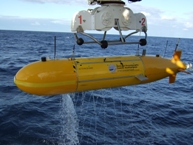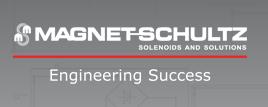 Add My Company
Add My Company
Sign In

Electromagnet assembly development specialist, Magnet Schultz Ltd, has provided an electropermanent magnet to the National Oceanography Centre for use in its Autosub6000.
Having completed several successful deep sea surveys to depths up to 4600m over the past few years, the Autosub Autonomous Underwater Vehicle uses purpose-designed Magnet Schultz technology to release abort weights in the event of a fault.
As an underwater autonomous, unmanned vessel, the Autosub deploys an electromagnet to hold a counter-weight beneath it. This electromagnet releases the mass at the end of the Autosub’s voyage to allow the vessel to rise to the surface. An ARGOS beacon then emits a signal from the Autosub to enable a support ship to find and collect it, along with the data and samples it has amassed. The development of a release mechanism for the abort weights was not straightforward, as Magnet Schultz Business Development Engineer, Rob Kershaw, explains:
“In order to function effectively and reliably, this application required an energise-to-release electromagnet. Since most electromagnets work the other way around, generating a magnetic field and holding the whole time they are energised, they use a substantial amount of power – not ideal for the Autosub’s limited power budget! With the Magnet Schultz GMPX 050 X00 D02 Electropermanent magnet, the unit operates as a permanent magnet, holding continuously without power. Momentarily energising the magnet overcomes the field to effect a release whatever payload is being held. And this represents a significant power saving.”
As a heavy duty holding magnet, the GMPX 050 X00 D02’s robust construction and finish makes it ideal for the arduous and corrosive environment of sea water submersion. In addition, since the Autosub was tested to increasingly greater depths, the magnet was required to withstand high differential pressures – construction was extremely important here and these unique demands were reflected in the final design.
Magnet Schultz’s power-to-release electromagnet does not use any battery energy while it is not being used. In case of a fault – for example, if the mission has taken too long or the vehicle has gone beyond its programmed depth – the electromagnet is pulsed from the battery pack with a capacitive energy store as back up in case the battery itself has failed. The device typically releases a 10kg steel weight via a release mechanism developed at the NOC. With that counter-weight mass jettisoned, the natural buoyancy of the sub returns it to the surface for recovery by its support vessel.
For more information on National Oceanography Centre calls on Magnet Schultz expertise for pioneering Autosub talk to Magnet Schultz Ltd
Enquire Now
List your company on FindTheNeedle.
